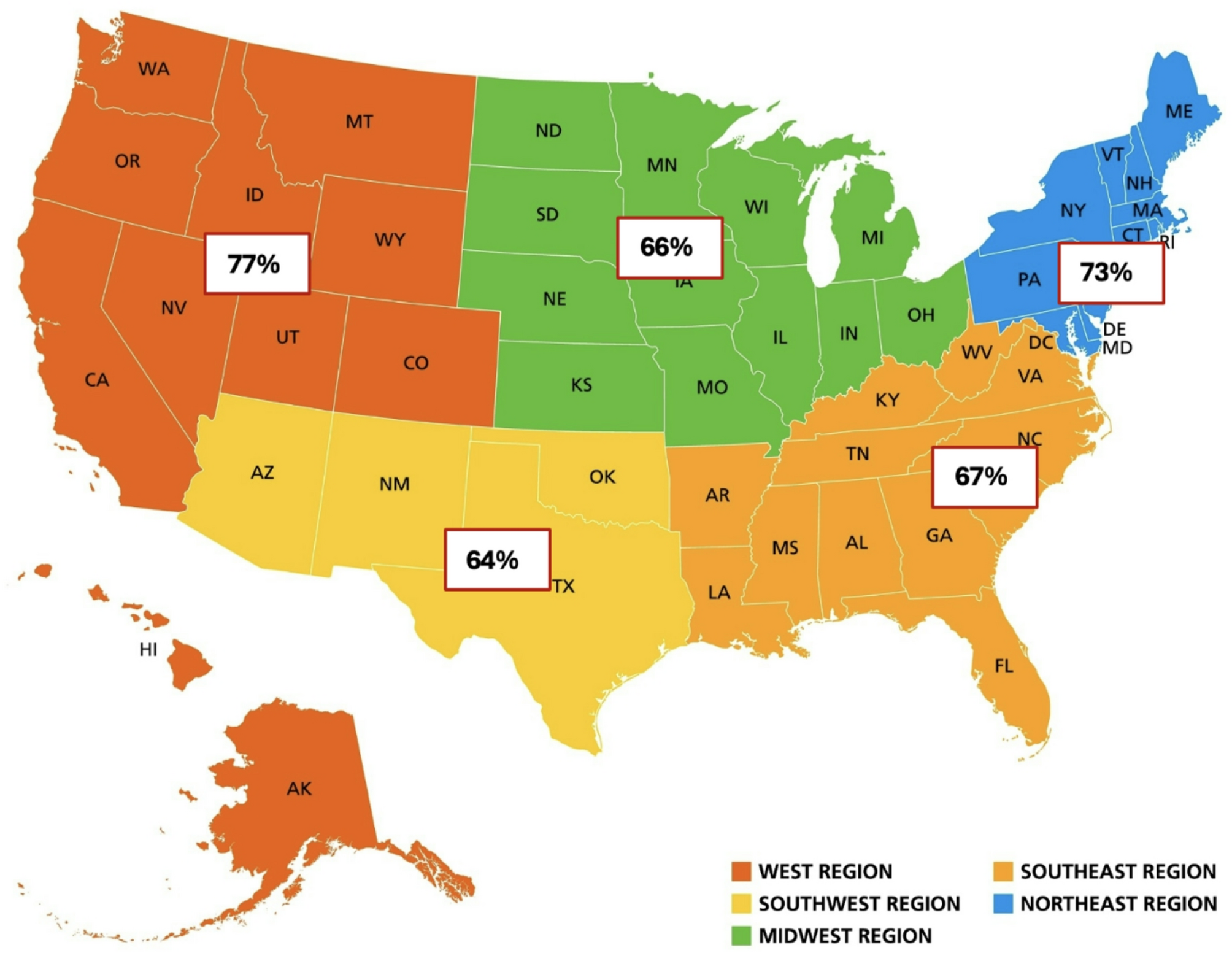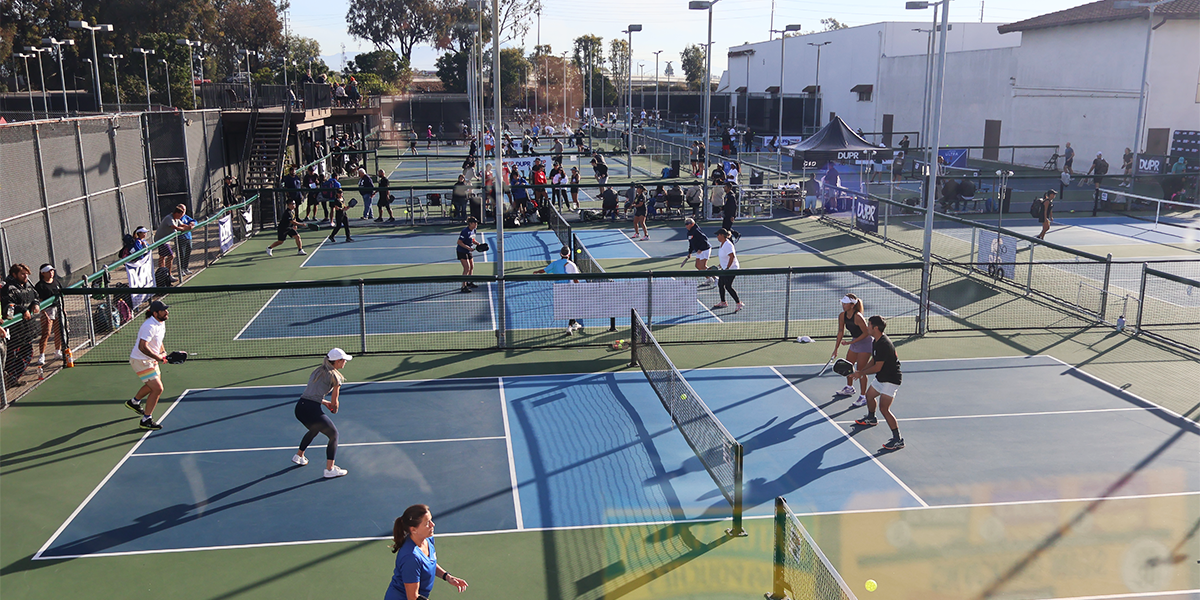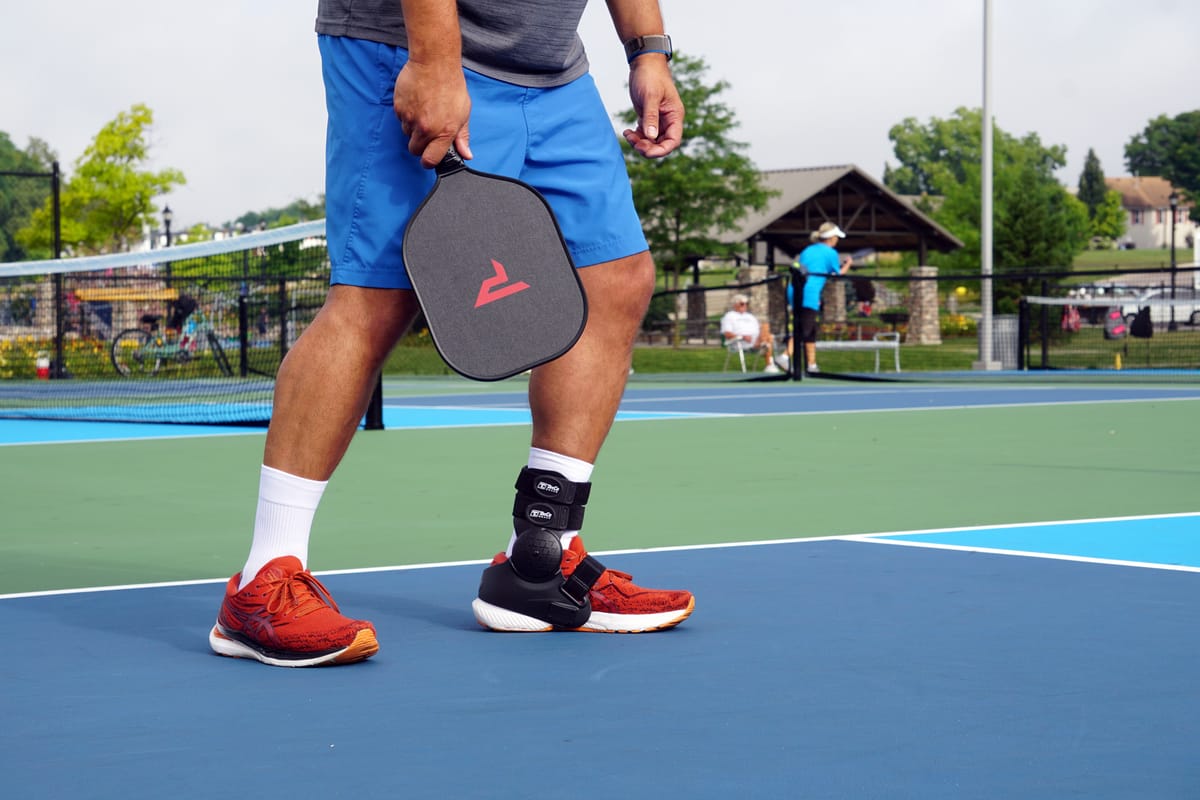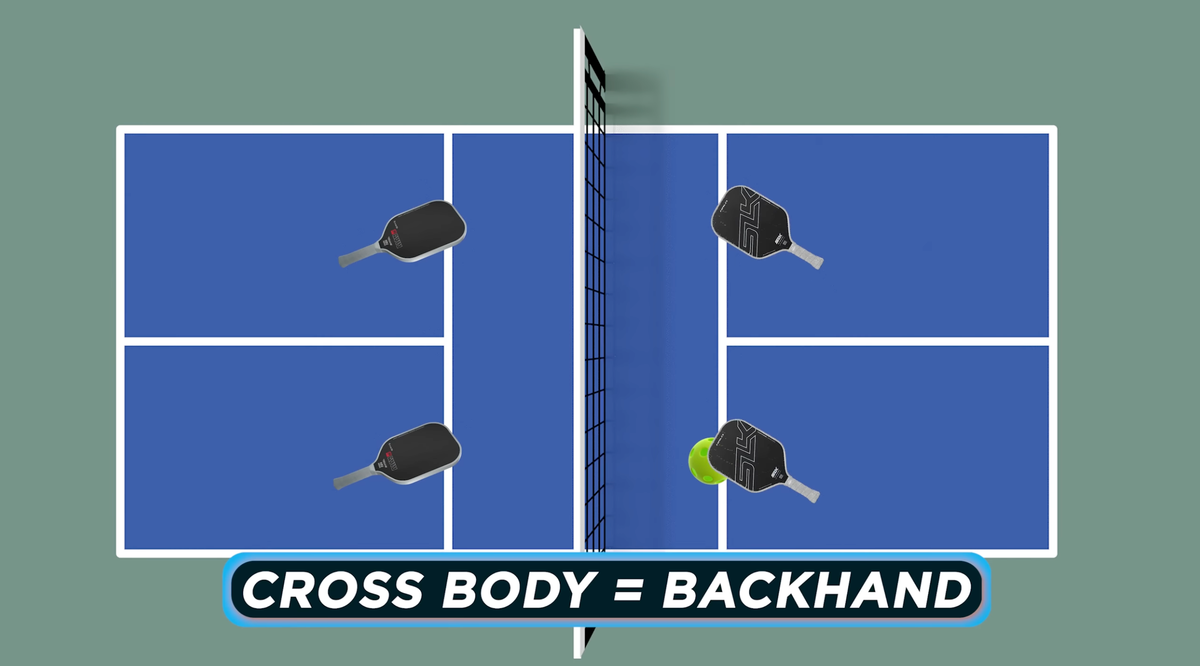Conducted by researchers from Saint Louis University, it analyzed 1,758 pickleball players ages 18-102 across the U.S. to better understand injury patterns beyond just emergency room data.
The largest study of its kind surveyed nearly 1,800 pickleball players across the United States and found that two out of every three reported an injury or discomfort related to the sport in the past year.
Even more striking? One in three admitted they keep playing through the pain.
That’s the paradox of pickleball right now. The sport is exploding, people are obsessed, and yet the physical toll is real. The data doesn’t just highlight injuries, it shows a pattern of stubbornness and passion that keeps people on the court even when their bodies are telling them they need a break.
1 in 3 Players Continue Playing Despite Pain
According to the study, led by author Oluwatoyosi Owoeye and his colleagues, 35.9% of players said they played despite ongoing pain or discomfort. Not just a sore shoulder for a day... ongoing issues. And while pain doesn’t always mean “injury” in the clinical sense, ignoring it can make things worse.
The researchers found that two in five players ended up with time-loss injuries, the kind that actually forced them to stop playing for at least a day, sometimes weeks.
Understanding Injury Patterns and Predictors in Pickleball Players: A Nationwide Study of 1,758 Participants - Sports Medicine - Open
Background Despite pickleball’s rapid growth in the United States, research regarding the patterns and predictors of injuries remain sparse. Objectives To describe the prevalence and characteristics of injuries, including time-loss (stopping play for at least a day) and non-time-loss injuries, and evaluate the predictors of injuries in pickleball players. Methods A cross-sectional study was conducted. Pickleball players ≥ 18 years of age across the United States, who participated in pickleball at least once a month, were invited to take a pre-validated survey. The primary outcome was self-reported all-complaint injuries, including any physical complaints in the past 12 months. Results A total of 1,758 participants (mean age: 62.7 ± 13.0 years) were included in the final analysis. The 12-month prevalence of all-complaint injuries was 68.5% (95% CI: 66.3–70.7%), with time-loss injuries at 40.8% (95% CI: 38.5–43.1%) and non-time-loss injuries at 51.2% (95% CI: 49.4–54.1%). The point prevalence of pain/ongoing injuries was 35.9% (95% CI: 33.1–38.7%). The knee reported the highest injury prevalence (29.1%) followed by combined lower extremity regions of thigh, leg and foot (26.9%), shoulder (22.2%), back (19.9%) and elbow (18.4%). The top “most serious” injury types were overuse/chronic conditions (35.3%), joint/ligament sprains (23.8%), and muscle strains/pulls (20.7%). Based on a multivariable logistic regression, significant predictors of injury included male sex (OR: 1.33, 95%CI: 1.07–1.65, p = 0.011), higher frequency of weekly play (OR: 1.45, 95%CI: 1.15–1.84, p = 0.002), fewer years (< 5 years) of play experience (OR: 1.50, 95%CI: 1.19–1.90, p = 0.001), low/moderate perception of injury prevention importance (OR: 2.02; 95%CI: 1.52–2.67, p < 0.001), and age categories ranging from 33 to 77 years (ORs ranging from 1.83 to 3.11, p ≤ 0.009). Neither increased duration of play nor higher body mass index significantly increased the odds of injury. Conclusions Injuries are common among pickleball players, with 69% experiencing at least one all-complaint injury annually, including two in five sustaining injuries that halt play and one in three continuing to play despite pain. These findings underscore the need for tailored injury prevention strategies to optimize the health benefits of pickleball. Identified predictors will inform future injury prevention initiatives in pickleball.


It’s a classic sports story. You tweak something, you shrug it off, you keep going. But in pickleball, where people are often playing multiple times per week, that little nagging ache can easily snowball into something bigger.
68.5% of Players Reported an Injury or Discomfort
The numbers are eye-opening: nearly seven in ten players had some kind of issue in the past year.
- 40.8% had time-loss injuries (the stop-you-in-your-tracks kind)
- 51.2% had non-time-loss injuries (aches, strains, soreness)
💡
This is the first large-scale study to capture more than just emergency room visits across a wide range of ages and skill levels.
It tracked both acute injuries and those “background pains” we don’t always report but definitely feel. The fact that even discomfort is so widespread should be a wake-up call.
Knees (29%) and Shoulders (22%) Are the Top Pain Points
The knee was the number one problem area (29%), followed closely by the lower leg/foot (27%) and shoulder (22%). After that, the back (20%) and elbow (18%) rounded out the top five.
Why those areas? Think about the movements: constant lunging, pivoting, quick directional changes, and explosive swings. Your knees take a pounding from sudden stops and starts. Your shoulders and elbows carry the strain of repetitive overhead shots and dinks. It’s not just one match, it’s hundreds of micro-movements that add up over weeks and months.
This Innovative Ankle Brace Is Purpose-Built for Pickleball
Many pickleball players – especially those with a history of ankle injuries – are looking for smarter, more effective ways to protect themselves without sacrificing performance.
 The Dink PickleballAlex E. Weaver
The Dink PickleballAlex E. Weaver
And here’s the kicker: Overuse injuries (35%) were more common than sprains or strains. Pickleball isn’t necessarily knocking players out with dramatic accidents. It’s wearing them down through repetition.
How Play Habits Affect the Odds of Injury
Injuries don’t just happen by chance. The study shows that how often you play, how long you’ve been playing, and even your experience level all shift the odds.
Middle-Aged Players (33–62) Had the Highest Injury Rates
This is where the study gets interesting. The players most likely to get hurt weren’t the youngest or the oldest. Instead, middle-aged players (33–62 years) had the highest rates of injury: around 77%. They’re active enough to play often and push themselves, but not always conditioned for the volume.
Men were also at higher risk, with a 33% greater chance of injury compared to women.
Playing 3+ Times Per Week Increased Injury Odds by 45%
Frequency mattered: players who logged three or more sessions per week were 45% more likely to get injured.
But here’s the surprise:
💡
Longer sessions (three-plus hours) didn’t increase injury odds. So it’s not how long you play, it’s how often.
Less Experience (Under 5 Years) Meant 50% Higher Injury Risk
Experience also played a huge role. Players with less than five years of experience were 50% more likely to report injuries. But for veterans, the risk actually dropped. It’s like their bodies adapted; they're not immune, but better prepared to handle the stress.
1,758 Players Surveyed, Ages 18–102
There have been reports of pickleball injuries before, but most were based on ER data.
That misses a huge chunk of the picture, because a lot of players don’t go to the ER for sore knees or nagging shoulder pain. This survey, 1,758 players, ages 18 all the way up to 102, offers the clearest snapshot yet of what’s really happening across the sport.
It’s a reality check: Pickleball is fun, social, and booming, but it’s not risk-free.
This baseline data will help shape smarter training, recovery, and injury-prevention strategies tailored to the sport.
Report: Pickleball Participation Surges to Nearly 20 Million in 2024
For the fourth consecutive year, pickleball remains America’s fastest-growing sport, and the numbers behind its meteoric rise are nothing short of historic.
 The Dink PickleballJason Flamm
The Dink PickleballJason Flamm

The Takeaway: Playing Through Pain Isn’t Sustainable
Pickleball’s growth is incredible—millions of players, new courts popping up everywhere, and a community that’s thriving. But the sport comes with its own physical price tag.
The biggest lesson? Playing through pain may keep you on court today, but it could sideline you tomorrow.
If you love the game, protecting your body has to be part of the deal. Otherwise, you’re not just risking a sore shoulder—you’re risking the chance to keep playing at all.
💡
The TIP Lab is working on addressing the problem of injuries and pain in pickleball in a follow-up Phase 2 study. If you're interested in joining, you can learn more here.
Anuncie Aqui / Advertise Here
Sua marca para o mundo Pickleball! / Your brand for the Pickleball world!

 English
English  Spanish
Spanish  Portuguese
Portuguese  German
German  Italian
Italian  Japanese
Japanese  French
French  Polish
Polish  Russian
Russian  Netherlands
Netherlands  Hungarian
Hungarian  Turkish
Turkish  Videos
Videos 








 English (US) ·
English (US) ·  Portuguese (BR) ·
Portuguese (BR) ·